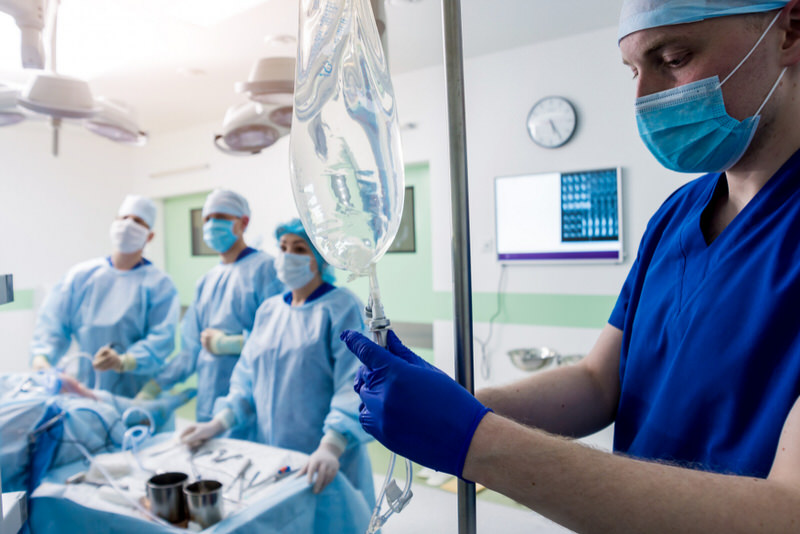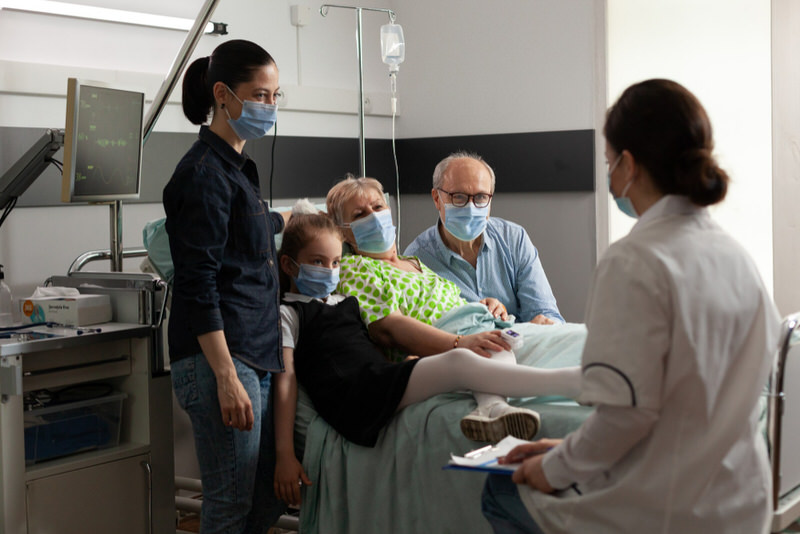Hip arthroscopic surgery is a minimally invasive medical procedure on the hip joint that allows doctors to operate on hip issues or injuries like Femoroacetabular Impingement (FAI). Small incisions let the surgeon operate on your joint problems. After a diagnosis and multiple tests, your surgeon will recommend this surgery. The recovery rate is pretty fast and doesn’t take more than 6-8 weeks. Just follow your doctor’s instructions and take your medications on time. The recovery period is crucial, but if you see any complications arising, then talk to your doctor.
If one suffers from hip pain due to various issues such as accidents, repetitive motions, or surgical abnormalities, there are different ways to help fix that. But one could choose to get an arthroscopy surgery done if other treatments haven’t resolved the issue.
Arthroscopic hip surgery is a minimally invasive surgical procedure. But there’s a lot that you need to know about the surgery, procedure, and recovery before you decide to get one. So let’s take a look and try to understand the whole process.
Symptoms for hip arthroscopic surgery
Before deciding to talk about the procedure of hip arthroscopy surgery, there’s a need for clarity on what kind of symptoms might lead to this surgery.
Your hip might be in a painful condition to an injury or due to other medical factors. The symptoms include:
- Hip pain or in the surrounding area
- Stiffness
- Limited range of motion
- Lack of flexibility
- Limping
- Locking, clicking, or catching
Reasons for hip arthroscopic surgery

Before recommending an arthroscopic hip surgery, your doctor will solve the issue with other treatment methods and avoid suggesting surgery.
Your doctor will only recommend surgery if they see your injury isn’t responding to non-surgical treatments and is still in pain.
With the help of this procedure, you’ll be relieved of issues that have damaged your labrum, articular cartilage, or other soft tissues surrounding the joint. These are issues which you might face from an accident of some sort.
But other orthopedic conditions might also lead to getting arthroscopy done.
- Femoroacetabular Impingement (FAI) is a disorder in which extra bone develops along the acetabulum or on the femoral head.
- Dysplasia is a condition where the hip socket is abnormally shallow.
- Snapping hip syndrome causes a tendon to rub across the outside of the joint. In some cases, repeated rubbing causes damage to the tendon.
- Synovitis causes the tissues that surround the joint to become inflamed.
- Loose bodies are fragments of bone or cartilage that become loose and move around within the joint.
- Hip joint infection
What is hip arthroscopic surgery?
It’s a minimally invasive hip surgery performed by an orthopedic surgeon using an arthroscope to examine the inside of the hip joint.
The surgeon makes a small incision to create access points for various arthroscopic needles, scalpels, or other special surgical tools. It allows the surgeon to treat a wide range of hip problems on the hip joint.
Hip arthroscopic procedure

There are several steps before the surgery begins that a patient goes through. Let’s look at each of these steps in detail to be more informed about what to expect if you choose to get a hip arthroscopy.
Tests and evaluation
Before the surgery, multiple test results tell if a person should be getting a hip arthroscopic surgery or non-surgical conservative treatment. The physician will get to learn about:
- Patient’s symptoms
- Patient’s medical history
- Review imaging (X-rays, CT scans, or MRIs)
- Physical examination to judge the range of motions
An assessment is done of the patient to recognize any health risks or potentially problematic issues that might occur during or after surgery.
Admission
It’s a simple one-day procedure, and the patient won’t need to stay overnight if they’re generally healthy.
As a patient are supposed to inform your surgeon of any medication, you’re taking. Some of them are not to be taken days before the surgery.
Of course, the hospital staff will mention when to arrive and give proper instructions on what to eat and drink before the procedure.
Anesthesia and preparation
Anesthesia is an essential aspect of this surgery. You’ll most likely be receiving regional anesthesia where an injection or small catheter delivers medication to the spinal column, numbing you from the waist down.
Most hip arthroscopy surgeries utilize regional anesthesia rather than general anesthesia. It lowers the risk and decreases the time between surgery and a patient’s discharge from the hospital.
Procedure
As a patient, you will be put in traction before this orthopaedic surgery begins.
Your hip will be pulled away from the socket enough for your surgeon to insert instruments, see the entire joint, and perform the arthroscopic techniques needed.
A portable X-ray device called a fluoroscope would be positioned for use during the procedure.
It’s to avoid injuring surrounding cartilage and to ensure that procedure goes smoothly without damaging surrounding nerves and blood vessels.
Incisions
Marks are made with a sketch pen on the skin surrounding the hip joint to do the incisions.
When the fluoroscope confirms the positioning, then a needle will be inserted into the joint space. The joint is sterile with a water-based solution creating fluid pressure to help open the joint.
An incision is done to make space for a guidewire to pass through the needle, which is withdrawn.
Then a thin tube called a cannula is inserted over this guidewire into the joint space. The wire is withdrawn, and an arthroscopic needle is inserted through the cannula to visualize the situation.
It’s done from 2-3 access points with 2-3 small incisions to analyze the situation and operate efficiently perfectly. Fluid flows through the arthroscope for a clear view and to control any bleeding.
Several instruments perform the surgical technique on the patient’s specific issue, including shaving, cutting, grasping, suture passing, and knot tying.
Towards the end, the incisions are stitched up and covered with skin tapes, with proper dressing followed.
Recovery

There will be some discomfort for a few days after the surgery and will be felt in the buttock, lower back ankle, and knee.
You will be advised with proper instructions from your physicians on pain medications, food to consume, things you can or cannot do.
Generally, it’s best to take off from work for two weeks to recover properly. Avoid any manual labor for the next six weeks. A recovering patient is recommended physical therapy to regain their mobility. Some stationary cycle and treadmill combinations are to be done.
It might take three months to recover from arthroscopic hip surgery completely. Crutches will be your primary support system, and you’ll be dependent on them for a while.
You might also be on leg braces, which will be removed gradually as your mobility increases weeks after surgery.
Things you need to avoid
- Any exercise, lifting, jumping, and even prolonged walking
- Standing for a long time
- Crouching or squatting
- Using a manual car where you have to use the clutch constantly
- You can’t be sleeping on your sides. Try to sleep on your back and keep your legs elevated whenever on the bed or resting.
Hip arthroscopic surgery complications
Even this minimally invasive surgery has some scope of risks and complications.
These complications are largely transient and incidences and fall somewhere between 0.5% to 6.4%. Although, if you do follow your doctor’s instructions and take medications as prescribed, there’s little scope for these complications, there’s still a chance.
Usually, if hip arthroscopy patients encounter a complication, it’ll be temporary and gradually go away with attention and treatment.
Some people do have anesthesia-related issues and have reported feeling temporary numbness in their groin and surrounding area.
Other complications are:
- Fracture
- Risk of infection
- Impotence
- Increased pain
- Abandoned procedure
- Bleeding
- Deep vein thrombosis
- Nerve palsies
- Avascular necrosis of the femoral head
- Instrument breakage
- Worsening of symptoms
- Delayed wound healing
- Extravasation of irrigation fluid
- Stiffness
- Development of arthritis
- Anesthesia-related issues
Hip arthroscopy vs. total hip replacement
When it comes to talking about the difference between hip arthroscopy and total hip replacement for a hip injury, it depends on the severity of the injury that decides the preferred surgical treatment.
While hip arthroscopic treatment aims to improve function and movement, it’s reserved for injuries that aren’t that major. Also, in patients without arthritis, hip arthroscopic surgery works well enough.
Total hip replacement is generally for those with a significant hip injury or who are diagnosed with arthritis.
Since this kind of surgery involves large incisions compared to arthroscopic surgery, it comes with much more considerations and specifications.
FAQs
How do I sit after hip arthroscopy?
When you’re trying to sit, you should remember to sit with your hips at 90 degrees. Don’t pull your knees closer to your chest, or it might trigger pain.
Avoid standing and walking for a prolonged time for at least a month after the surgery. You can’t lift heavy weight or squat for up to 6 weeks.
What do I need after hip arthroscopy?
Your doctor will provide you with detailed instructions on what you can do and what you can’t.
During this time, you need to take care of your meals, take medications as prescribed, avoid things your doctor tells you to, and you’ll be better in 6-8 weeks.
Your range of motion is quite limited at this point, so you might need professional help to go back to your previous mobility. If you feel any complication arising, you should discuss with your doctor.
How long do you have to wear a brace after hip arthroscopy?
You will need to wear hip braces for three weeks after your surgery. It’s necessary to control hyperextension and abduction. You’ll need to wear this while on the support of crutches and flat foot weight-bearing.
What are the advantages of hip arthroscopy?
– A minimally invasive surgery implies there’s very little trauma to the joint.
– You can go home after being done with the surgery and don’t need to stay overnight.
– A short recovery period of 6-8 weeks.
– Can postpone advancement of hip arthritis by treating its cause in the early stage.
– Can delay or eliminate the need for hip replacement.
To summarize
A hip arthroscopic surgery can treat your hip issues and injury like damage to articular cartilage by a minimally invasive method. Compared to hip replacement surgery, it’s much better to treat hip problems.
If you choose to get it done, it can even eliminate the need to get a hip replacement later on as your issues are dealt with at the right time.
Of course, there are still things to worry about and consider before this surgery. You need to carefully look into the advantages, procedure, complications, and recovery time taken after the surgery.
At the end of the day, it’s your choice whether you want to move forward with this surgery. Discuss whatever doubts you might have with your surgeon and your family because you need a strong support system to recover quickly!


